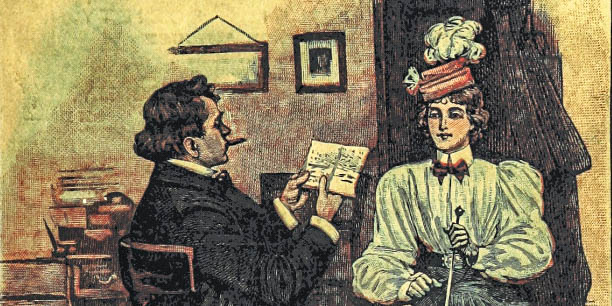Just imagine: an intrepid woman, in the Victorian age: she rides a bicycle, drives cars, breaks the rules, skips tea parties, takes fingerprints from a dead body, and commits lesser crimes to resolve tough cases (all considered nearly scandalous for the period).
We can read about just such women in The Penguin Book of Victorian Women in Crime, an anthology compiled by non-fiction author and anthologist Michael Sims (born in Tenessee in 1958), which brings together excerpts from stories about the best Victorian female crime fighters such as Loveday Brooke, Dorcas Dene, and Lady Molly—and also a select group of criminals.
Sims shows his fascination for these women: “Instead of chatting about fashion in the boudoir while their husbands smoked cigars after dinner, these women went into the London fog chasing suspects.”
During the latter years of the Victorian age, public opinion in Britain was fascinated by the suspicious figure known as the “new woman,” the pioneering detective who chased down suspects through the thick fog of London.
Here are some of the authors whose works are excerpted in the book, and their famous fictional detectives:
William S. Hayward (1835-1900) is one of the earliest of these authors represented in the anthology; he wrote Revelations of a Lady Detective, published in 1864. It is one of the first books to present a woman as a professional detective. The detective, Mrs. Paschal, is a well-educated woman of good birth, who by her own account enjoys a vigorous and subtle intellect. She herself isn’t sure why she ended up embarking on a “strange, stimulating, and mysterious career.”
C. L. Pirkis (1841-1910) is the first female author to create the character of a woman detective: the astute Loveday Brooke. Brooke is a respected private investigator. She is socially versatile, and constantly sways between princess and damsel, between town and city, according to Sims. Unlike many Victorian detective works, Brooke’s stories are not part of a series of novels converging on a final denouement; each story is independent, like Sherlock Holmes’ cases. One of the most famous stories is “Drawn Daggers,” from 1893. Her complete stories may be read for free online, here.
Mary E. Wilkins (1852-1930). Wilkins is a popular and respected author, considered one of the best creators of New England characters. In her famous story “The Long Arm,” from 1895, the protagonist Sarah Fairbanks isn’t a professional detective, but she has all the resources to be one. A male detective joins her, and together they carry out an investigation that will lead to a detailed confession by the assassin. Wilkins’ works are available for free on this site.
Anna Katharine Green (1846-1935) is one of the most outstanding figures in the history of detective stories. Her most famous character is Ebenezer Gryce of the New York Police Department. Green also created Amelia Butterworth and Violet Strange, two entertaining detectives. Meet them and other characters (again, for free) here.

